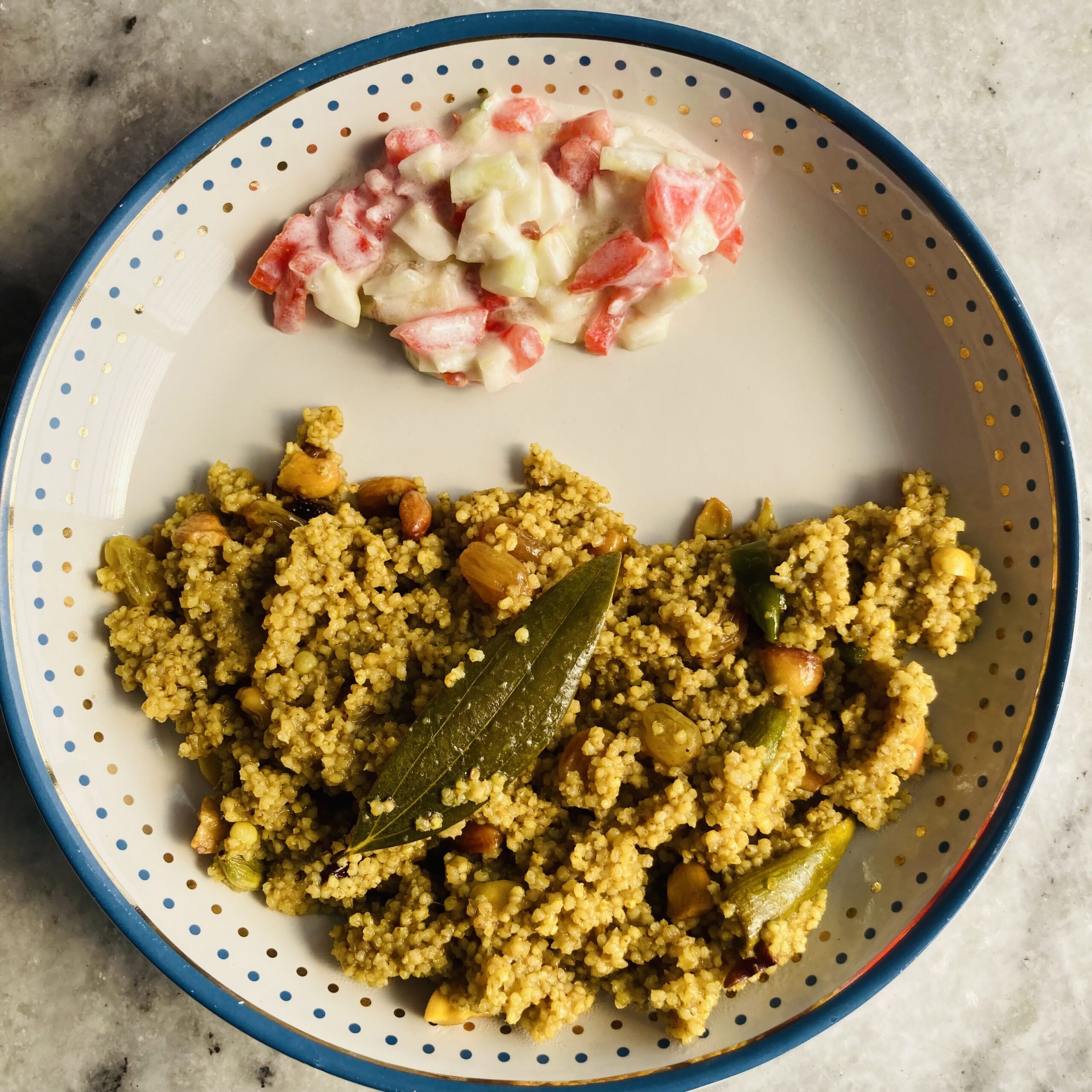
Chal potol is a traditional Bengali pulao that is made with pointed gourd. You may know pointed gourd as parwal, its Hindi name. This dish is mildly flavoured with aromatic spices, with a striking contrast of sweet and savoury. The resulting dish is perfect for a relaxed, laid-back lunch. Sayani from our MRP cooking lab has developed the barnyard millet version of this recipe.
| Barnyard millet (sama chal) | 1 cup |
|---|---|
| Ghee | 3 tablespoons |
| Green cardamom | 2-3 pods |
| Cloves | 2-3 |
| Cinnamon stick | 1 inch |
| Salt | To taste |
| Turmeric powder | ½ teaspoon |
| Grated ginger | 1 teaspoon |
| Pointed gourd, cut in half | 6-7 |
| Oil | 1 tablespoon |
| Cashews | ¼ cup |
| Raisins | ¼ cup |
| Green chillies, slit lengthwise | 2-3 |
| Powdered sugar | 1 ¼ tablespoon |
| Bayleaf | 2-3 |
What You Will Need
A non-stick kadai.
Instructions
Rinse and soak the barnyard millet overnight. The next day, drain and air dry them for an hour or longer before use.
In a bowl, mix the millet with ghee, whole spices (green cardamom, cloves, cinnamon), salt, ¼ teaspoon of turmeric powder, and grated ginger. Let it rest for 15-20 minutes.
Marinate the pointed gourd in salt and ¼ teaspoon of turmeric powder, and let it rest for 15 minutes.
Add oil to the kadai, and stir fry the pointed gourd on a medium flame until it is cooked through. It will look browned around the edges, and be soft at its center. Then, set the gourd aside.
In the same kadai, add ghee and fry the cashews and raisins until the cashews are lightly brown, and the raisins look slightly plump. Set them aside.

Add tej patta to the kadai, followed by the millet mixture. Fry the mix for six minutes on low to medium flame, stirring occasionally so that the millet doesn’t stick to the bottom.
Add boiling water to the millet and cover the kadai. Let the mix cook until it is almost done. The millet grains should seem fluffy, and not sticky. You can confirm whether the millet is cooked by pressing the grain between your fingers. If the grain feels soft, it is cooked.
Mix the fried cashews, fried raisins, gourd pieces, and green chillies into the cooked millet gently. Cook for an additional two to three minutes.

Add the powdered sugar and mix well. Let it rest for five minutes.

Serve hot with raita, or any side dish of your choice.
Tips and variations
Cooling the pulao down before serving helps ensure that the millet grains remain separate.
Sayani Sengupta is a chef volunteer for the MRP cooking lab and a home chef based out of Kolkata. Sayani runs her own food brand, Gooseberri, for which she often writes recipes. Her recipes have also featured in Bengali magazines, such as Sananda, as well as other publications like Times of India, Telegraph, and Indulge Express.

This recipe is part of the Millet Revival Project 2023, The Locavore’s modest attempt to demystify cooking with millets, and learn the impact that it has on our ecology. This initiative, in association with Rainmatter Foundation, aims to facilitate the gradual incorporation of millets into our diets, as well as create a space for meaningful conversation and engagement so that we can tap into the resilience of millets while also rediscovering its taste.

Rainmatter Foundation is a non-profit organisation that supports organisations and projects for climate action, a healthier environment, and livelihoods associated with them. The foundation and The Locavore have co-created this Millet Revival Project for a millet-climate outreach campaign for urban consumers. To learn more about the foundation and the other organisations they support, click here.
You must be logged in to rate this recipe.

Sign in with email
